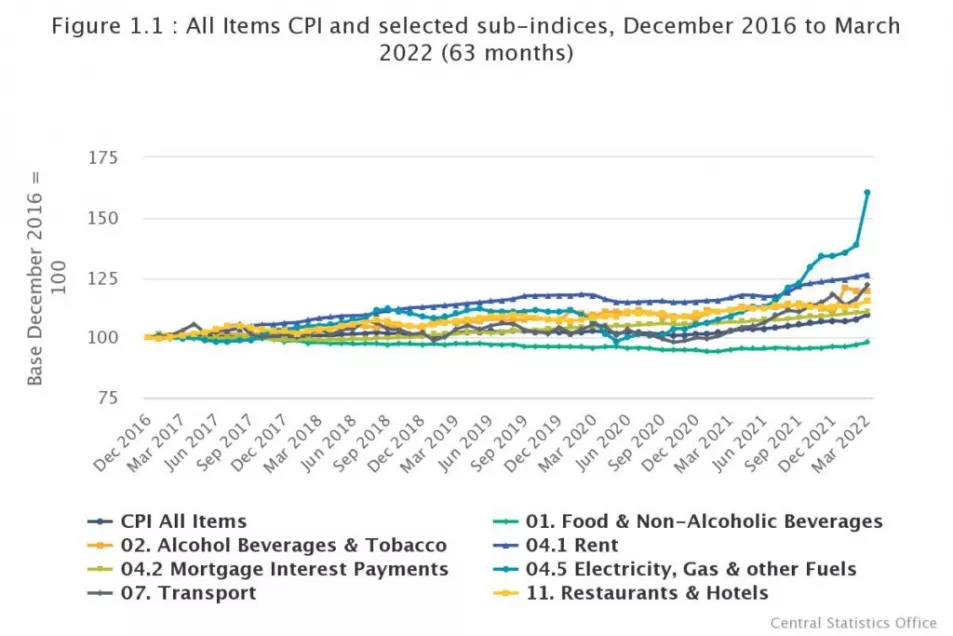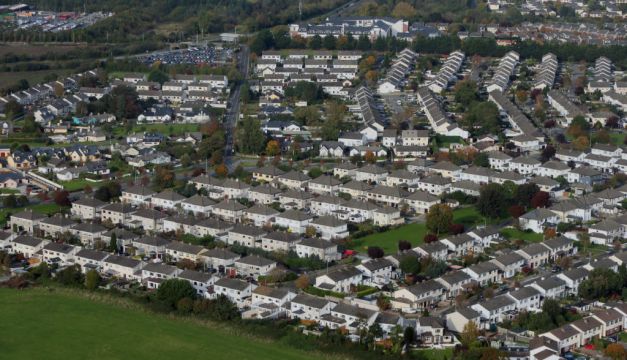Inflation in March 2022 ranged from 6.1 per cent for higher income households to 7.6 per cent for lower income households, according to the latest data from the Central Statistics Office (CSO).
Compared with the annual Consumer Price Index (CPI) inflation figure of 6.7 per cent in March 2022, a new breakdown shows households with the lowest incomes experienced higher inflation, up to 7.6 per cent, while those in the highest income category had annual estimated inflation of 6. 1 per cent.
Households paying a mortgage had estimated annual inflation of 6.3 per cent while for households that own their home outright, inflation was estimated to be 7.0 per cent.
For those that rent their home, they had a higher than average inflation rate of 7.0 per cent for those renting from a private owner and 7.3 per cent for those renting from a local authority
Compared with the March 2022 CPI figure of 6.7 per cent, the annual inflation rate was 6.5 per cent for urban households and 7.3 per cent for rural households
Higher than average inflation was observed for households of one adult (7.7 per cent), one adult with children (7.2 per cent) or two adults without children (6.9 per cent).
Commenting on the research, Edel Flannery, senior statistician in the prices division, said: “The increasing rate of inflation since the middle of 2021 has prompted greater interest in price change and its effects on households.
"The CPI is a measure of average inflation for all households. However, each household has its own unique consumption pattern of goods and services and therefore its own personal experience of inflation.

"The research paper published by the CSO attempts to take account of those differences between households and provides an estimated breakdown of the CPI results by household characteristics up to March 2022, calculated by combining the CPI results with more detailed expenditure data from the 2015/16 Household Budget Survey. "
The report presents estimates of inflation classified by household income, composition of the household, housing tenure, age of the household reference person and whether the household is in an urban or rural setting.
Ms Flannery said: “The cost of energy was one of the major drivers of inflation in the 12 months to March 2022."
Transport related price changes were responsible for more than a third of the 6.7 per cent annual change in the CPI (2.4 percentage points of the 6.7 per cent increase) while electricity, gas & other fuels contributed more than another quarter of the change (1.9 percentage points).”
For households in the lowest 10 per cent by income, electricity, gas & other fuels was the largest contributor to their estimated inflation rate (2.5 percentage points of 7.5 per cent). This was followed by transport (1.8 percentage points) and rent (1.5 percentage points).
For households in the top 10 per cent by income, Transport was the largest contributor to their estimated inflation (2.4 percentage points of 6.1 per cent). This was followed by electricity, gas & other fuels (1.4 percentage points) and restaurants & hotels (0.8 percentage points).
For those renting from a local authority, electricity, gas & other fuels was the largest contributor to their annual inflation (2.4 percentage points of 7.3 per cent), followed by rent (1.6 percentage points) and transport (1.5 percentage points).







